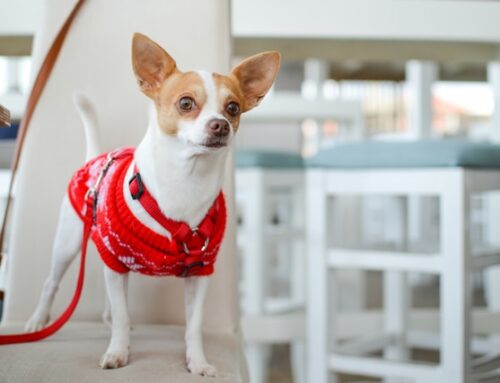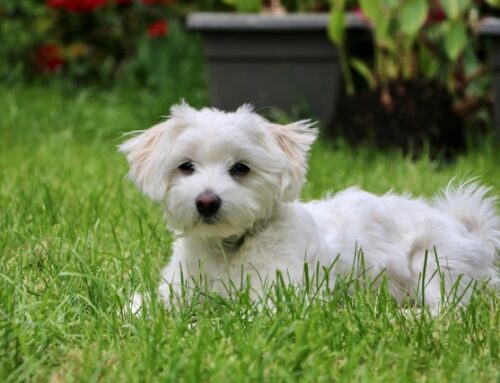Overview
Introduction: Best Dogs for Kids
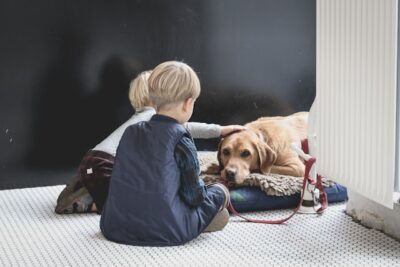
As parents, the choice to welcome a family dog into your household is a significant decision. A well-suited dog has the potential to become a treasured companion, playmate, and a source of delight for your children.
In this all-encompassing guide, we'll navigate the vibrant realm of family dogs, delving into various family dog breeds, essential considerations, and practical insights to assist you in selecting the best fit for your family.
Discover the best dogs for kids, uncover characteristics that make them excellent family pets, and gain valuable tips for choosing the best family dog that brings joy and harmony to your home.
Importance of Choosing the Right Dog for Kids
Choosing a dog isn't just about finding a cute face; it's about ensuring a harmonious relationship between your new pet and your children. The right dog can teach responsibility, provide unconditional love, and create lasting memories.
Use this guide as a resource to evaluate the traits of different breeds and consider your lifestyle when choosing a dog. Families looking to adopt a puppy in Florida should also factor in local pet rescue organizations and licensed adoption centers as a responsible and rewarding way to bring home a furry friend.
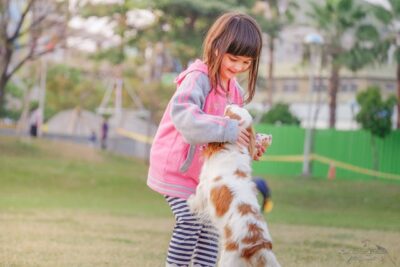
Considerations for Families with Children
Before diving into specific breeds, let's discuss crucial factors every family should consider when choosing the best dogs for kids. Consider your living space, your child's age, and how much time your family can dedicate to training, play, and care. Families interested in puppy adoption centers should research breed behavior and the dog adoption process to find the right fit.
Understanding Dog Breeds for Families
Families searching for a dog often focus on breeds known for their calm, loyal, and gentle nature. From affectionate lapdogs to active working breeds, each brings a unique personality that suits different home environments.
Overview of Different Breeds
From small and playful to large and gentle, dog breeds offer a diverse range of qualities. Understanding these breeds is the first step toward finding the perfect match for your family.
Characteristics to Look for in a Kid-Friendly Dog
When looking for a kid-friendly dog, it's important to consider certain characteristics. A dog's temperament should be gentle and patient, especially around children.
Additionally, a dog that is sociable and trainable can make for a great companion for kids. Finally, a breed that is known for being playful and energetic can ensure that the dog and child have a bond filled with fun and activity.

Size Matters: Small vs. Large Breeds
Size is a crucial factor when choosing a family dog. We'll explore the advantages and considerations of both small and large breeds, helping you make an informed decision.
For families in apartments or smaller homes, Florida puppy rehoming services can suggest the most suitable small breeds based on your living situation.
Active Families and Energetic Dogs
Active families often seek energetic dogs that can keep up with their lifestyle. Breeds known for their high energy levels, such as Border Collies or Labrador Retrievers, can thrive in these environments. Regular exercise and engaging activities are crucial to ensure these dogs remain happy and healthy members of the family.
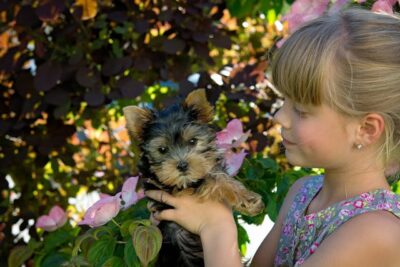
Smallest Dog Breeds and Their Charms
The smallest dog breeds, such as the Chihuahua and the Yorkshire Terrier, have a special charm that captivates many dog lovers. Despite their tiny size, these breeds often have big personalities, being bold, playful, and fiercely loyal to their owners. Their compact size also makes them convenient travel companions, perfect for those who love to take their furry friends everywhere they go.
Quintessential Family Dog: Traits to Seek
When searching for the quintessential family dog, look for breeds known for their friendly and sociable nature. These dogs should be patient and gentle, especially with children, displaying a calm demeanor in various situations.
Additionally, a family dog should be adaptable and trainable, making it easier to integrate into the family's lifestyle and routine.
Considering Other Dogs and Other Pets
Before getting a new dog or puppy, consider a breed known for its ability to coexist with other pets. Breeds like the Golden Retriever or the Beagle are often friendly and adaptable, making them more likely to get along with other animals in the household.
However, it's important to supervise interactions and introduce the new pet to existing pets slowly to ensure a smooth integration.
Top 5 Small Dog Breeds for Kids
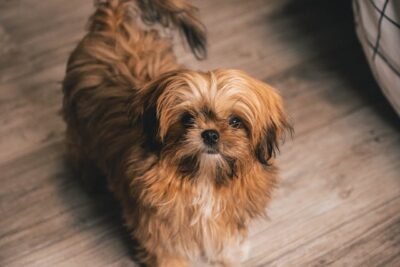 Shih Tzu
Shih Tzu
- Temperament and Playfulness
Shih Tzus are known for their friendly and affectionate temperament, making them great companions for kids. They are playful and lively, often enjoying interactive games and activities with children. Their small size and sturdy build also make them suitable for gentle play, and their adaptability to different environments allows them to easily integrate into family life.
- Size and Space Requirements
Shih Tzus are small dogs, typically weighing between 9 to 16 pounds (4 to 7 kilograms) and standing about 8 to 11 inches (20 to 28 centimeters) tall at the shoulder. Due to their small size, they can comfortably live in apartments or homes with limited space, as long as they have access to daily walks and indoor playtime. They are well-suited for indoor living and do not require a large yard for exercise.

Cavalier King Charles Spaniel
- Gentle Nature and Affection
Cavalier King Charles Spaniels are known for their gentle and affectionate temperament, making them great companions for kids.
They are playful and enjoy interacting with children, often forming strong bonds with their young family members. Their adaptability and patience make them well-suited for family life, adding joy and companionship to any household.
- Size and Space Requirements
Cavalier King Charles Spaniels are small to medium-sized dogs, typically weighing between 13 to 18 pounds (6 to 8 kilograms) and standing about 12 to 13 inches (30 to 33 centimeters) tall at the shoulder.
Their manageable size makes them well-suited for indoor living and suitable for families with limited space. Despite their small stature, they are sturdy and playful, enjoying activities with children while being gentle and affectionate companions.
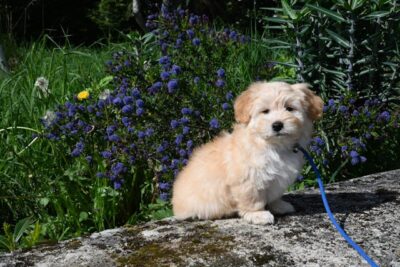
Havanese
- Temperament and Playfulness
Havanese dogs are known for their cheerful and affectionate temperament, which makes them great companions for kids. They are playful and gentle, often forming strong bonds with children. Their adaptable nature allows them to fit into various family dynamics, adding a loving and playful presence to the household.
- Size and Space Requirements
Havanese are small dogs, typically weighing between 7 to 13 pounds (3 to 6 kilograms) and standing about 8 to 11 inches (20 to 28 centimeters) tall at the shoulder. Their compact size makes them well-suited for indoor living, making them suitable for families with limited space.
Despite their small size, they are sturdy and playful, able to keep up with children's energy levels while being gentle and affectionate companions.

Dachshund
- Temperament and Playfulness
Dachshunds are known for their curious and playful nature, which makes them great companions for kids. They enjoy interactive play and have a lively demeanor that matches well with children's energy levels.
Despite their small size, they are sturdy and can be quite resilient, making them a fun and engaging pet for kids to play with.
- Size and Space Requirements
Dachshunds are small to medium-sized dogs, typically weighing between 16 to 32 pounds (7 to 14 kilograms) and standing about 8 to 9 inches (20 to 23 centimeters) tall at the shoulder. Their compact size makes them well-suited for indoor living, making them suitable for families with limited space.
Despite their small stature, they are sturdy and playful, able to keep up with children's energy levels while being gentle and affectionate companions.
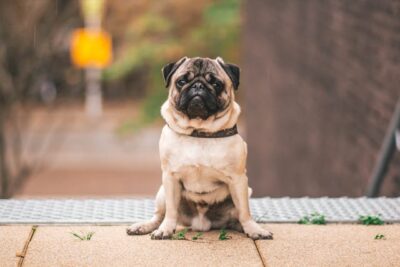
Pug
- Charming and Sociable
Pugs are known for their charming and sociable nature, making them great companions for kids. Their playful demeanor and affectionate personalities make them well-suited for family life, as they enjoy being part of the daily activities and bonding with children.
Additionally, their sturdy build and adaptable nature make them patient and gentle with kids, enhancing their reputation as a great breed for families.
- Size and Space Requirements
Pugs are small dogs, typically weighing between 14 to 18 pounds (6 to 8 kilograms) and standing about 10 to 13 inches (25 to 33 centimeters) tall at the shoulder. Due to their small size, they can comfortably live in apartments or homes with limited space, as long as they have access to daily walks and indoor playtime. They are well-suited for indoor living and do not require a large yard for exercise.
Top 5 Medium Dog Breeds for Kids

Beagle
- Temperament and Playfulness
Beagles are known for their friendly disposition and playful nature, making them one of the best family dog breeds. Their good-natured and even-tempered traits ensure a harmonious environment, especially with children. Learn how these compact dogs, like the delightful Beagle, bring joy and activity to your household.
- Size and Space Requirements
Beagles are a small to medium-sized breed, typically weighing between 20 to 30 pounds (9 to 13.6 kilograms) and standing about 13 to 15 inches (33 to 38 centimeters) tall at the shoulder.
They are well-suited for indoor living and can adapt to apartment life, as long as they receive regular exercise and mental stimulation. Beagles enjoy exploring outdoor spaces, so having access to a secure yard or regular walks is important for their physical and mental well-being.
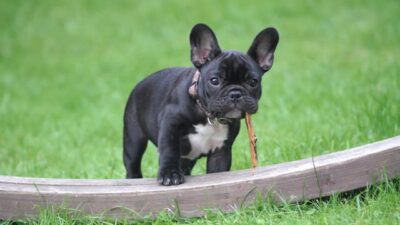
French Bulldog
-
- Temperament and Playfulness
French Bulldogs are known for their friendly and adaptable temperament, which makes them great companions for kids. They are playful and affectionate, enjoying interactive play with children.
Their patient and easygoing nature makes them well-suited for family life, adding a fun and loving presence to the household.
- Size and Space Requirements
French Bulldogs are small dogs, typically weighing between 16 to 28 pounds (7 to 13 kilograms) and standing about 11 to 12 inches (28 to 31 centimeters) tall at the shoulder.
Their compact size makes them well-suited for indoor living, making them suitable for families with limited space. Despite their small stature, they are sturdy and playful, able to keep up with children's energy levels while being gentle and affectionate companions.
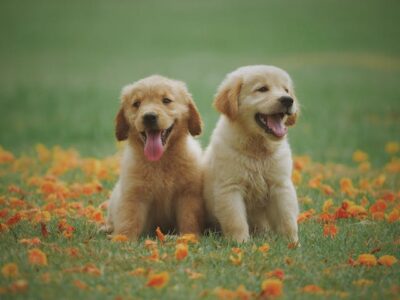
Golden Retriever
- Temperament and Playfulness
Golden Retrievers are known for their friendly and gentle temperament, which makes them great companions for kids. They are playful and energetic, enjoying games and activities with children.
Their patience and loyalty make them well-suited for family life, adding joy and companionship to the household.
- Size and Space Requirements
Golden Retrievers are medium to large-sized dogs, typically weighing between 55 to 75 pounds (25 to 34 kilograms) and standing about 21 to 24 inches (53 to 61 centimeters) tall at the shoulder.
Despite their size, they are well-suited for indoor living and can adapt to various living spaces, including apartments, as long as they receive regular exercise. Their gentle nature and playful demeanor make them excellent companions for kids, as they are patient and tolerant of children's activities.

Boxer
- Temperament and Playfulness
Boxers are known for their playful and energetic temperament, which makes them great companions for kids. They are affectionate and loyal, often forming strong bonds with children. Their protective nature also makes them watchful over kids, adding a sense of security to the family dynamic.
- Size and Space Requirements
Boxers are medium to large-sized dogs, typically weighing between 50 to 70 pounds (23 to 32 kilograms) and standing about 21 to 25 inches (53 to 63 centimeters) tall at the shoulder.
Despite their size, they are well-suited for indoor living and can adapt to various living spaces, including apartments, as long as they receive regular exercise. Their playful and energetic nature makes them great companions for kids, as they have the stamina to keep up with children's activities.
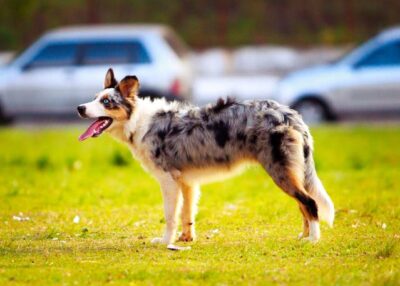 Australian Shepherd
Australian Shepherd
- Temperament and Playfulness
Australian Shepherds are known for their intelligent and energetic temperament, which makes them great companions for kids. They are highly trainable and enjoy engaging in activities with children, such as fetch or agility training. Their loyal and protective nature also makes them watchful over kids, forming strong bonds within the family.
- Size and Space Requirements
Australian Shepherds are medium-sized dogs, typically weighing between 40 to 65 pounds (18 to 29 kilograms) and standing about 18 to 23 inches (46 to 58 centimeters) tall at the shoulder. They are well-suited for active families with enough space for them to run and play.
Despite their energy levels, they are adaptable to various living spaces, including apartments, as long as they receive regular exercise and mental stimulation. Their playful nature and loyalty make them great companions for kids, as they enjoy being part of the family's activities.
Top 5 Large Dog Breeds for Kids

Bernese Mountain Dog
- Temperament and Playfulness
Bernese Mountain Dogs are known for their gentle and affectionate temperament, which makes them great companions for kids. They are patient and tolerant, often forming strong bonds with children. Despite their large size, they are gentle and careful around kids, making them a reliable and trustworthy family pet.
- Size and Space Requirements
Bernese Mountain Dogs are large dogs, typically weighing between 70 to 115 pounds (32 to 52 kilograms) and standing about 23 to 27 inches (58 to 69 centimeters) tall at the shoulder. Despite their size, they are gentle giants that are well-suited for indoor living as long as they have enough space to move around.
Their calm and affectionate nature makes them great companions for kids, as they are patient and protective of their young family members.

Irish Setter
- Temperament and Playfulness
Irish Setters are known for their friendly and playful temperament, which makes them great companions for kids. They are energetic and enjoy outdoor activities, making them ideal playmates for children. Their affectionate nature and patience make them well-suited for family life, adding joy and excitement to the household.
- Size and Space Requirements
Irish Setters are medium to large-sized dogs, typically weighing between 55 to 75 pounds (25 to 34 kilograms) and standing about 25 to 27 inches (64 to 69 centimeters) tall at the shoulder.
Despite their size, they are well-suited for indoor living as long as they receive regular exercise and mental stimulation. Their playful nature and gentle demeanor make them great companions for kids, as they enjoy being part of the family's activities.

German Shepherd
- Temperament and Playfulness
German Shepherds are known for their loyal and protective temperament, which makes them great companions for kids. They are intelligent and easy to train, making them an excellent choice for families looking for a reliable and trustworthy pet.
Despite their strong and confident demeanor, they are gentle and patient with children, forming strong bonds within the family.
- Size and Space Requirements
German Shepherds are medium to large-sized dogs, typically weighing between 50 to 90 pounds (23 to 41 kilograms) and standing about 22 to 26 inches (56 to 66 centimeters) tall at the shoulder. Despite their size, they are well-suited for indoor living as long as they have enough space to move around and regular exercise.
Their protective nature and loyalty make them great companions for kids, as they are watchful over their young family members.
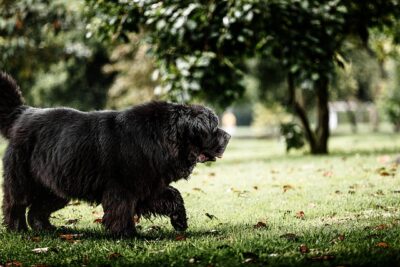
Newfoundland
- Temperament and Playfulness
Newfoundlands are known for their sweet and gentle temperament, which makes them great companions for kids. They are patient and protective, often forming strong bonds with children.
Despite their large size, they are known for their calm and composed nature, making them a reliable and trustworthy family pet.
- Size and Space Requirements
Newfoundlands are large dogs, typically weighing between 100 to 150 pounds (45 to 68 kilograms) and standing about 26 to 28 inches (66 to 71 centimeters) tall at the shoulder. Despite their size, they are gentle giants that are well-suited for indoor living as long as they have enough space to move around.
Their calm and patient nature make them great companions for kids, as they are gentle and tolerant of children's antics.
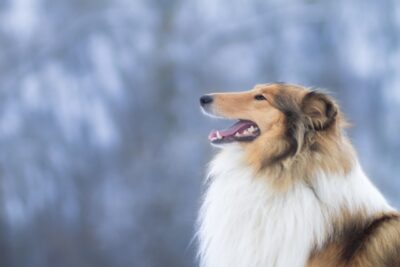
Collie
- Temperament and Playfulness
Collies are known for their gentle and intelligent temperament, which makes them great companions for kids. They are loyal and protective, often forming strong bonds with children. Their playful nature and willingness to participate in activities make them ideal playmates for kids, adding joy and excitement to family life.
- Size and Space Requirements
Collies are medium to large-sized dogs, typically weighing between 50 to 75 pounds (23 to 34 kilograms) and standing about 22 to 26 inches (56 to 66 centimeters) tall at the shoulder. They are well-suited for indoor living as long as they have enough space to move around and regular exercise. Their gentle and protective nature make them great companions for kids, as they are patient and loyal to their young family members.
Special Considerations for Allergies
Hypoallergenic Breeds
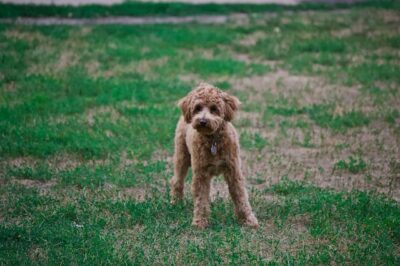
Poodle
Poodles are often recommended for allergy sufferers because they have hair rather than fur, which produces less dander. This makes them a great choice for families with kids who have allergies. Additionally, Poodles are known for their friendly and trainable nature, making them great companions for children.
Maltipoo
Maltipoos are considered hypoallergenic due to their low-shedding coat, which produces less dander. This makes them a suitable choice for families with kids who have allergies. Additionally, Maltipoos are known for their playful and affectionate nature, making them great companions for children.
Labradoodle
The Labradoodle is often considered one of the best dogs for kids, especially for families with allergies. As a hypoallergenic breed, they shed less and produce less dander, making them a suitable choice for families with sensitivities. Labradoodles are known for their friendly and playful nature, making them great companions for children.
Goldendoodle
The Goldendoodle is among the best dogs for kids, particularly for families with allergies. Being a hypoallergenic breed, they shed minimally and are less likely to trigger allergic reactions. Goldendoodles are known for their gentle temperament and high intelligence, making them excellent companions and playmates for children.
Managing Allergies with Proper Care
Discover practical tips for managing allergies, allowing even sensitive family members to enjoy the company of a furry friend. These tips are particularly helpful for city dwellers who want a sweet-natured pet while considering allergy concerns.
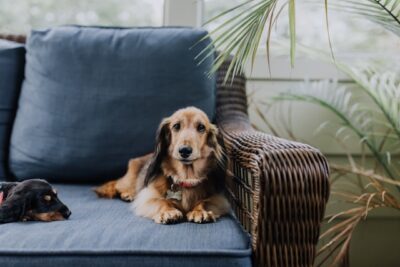
Preparing Your Home for a Kid-Friendly Dog
Creating a Safe Space
Setting up a calm, designated area for your new dog is essential. This space should include a soft bed, access to fresh water, favorite toys, and minimal foot traffic to help the dog decompress. Dogs adopted through a licensed adoption center may need extra time to feel secure, especially if they're transitioning from a rescue dog environment.
Essential Supplies for Dog Owners
Before bringing your dog home, prepare the essentials: food and water bowls, nutritious food, a leash and collar, grooming tools, and toys. Families who adopt a puppy in Florida can consult with their puppy adoption center for a checklist suited to their specific breed. Proper preparation ensures a smooth transition and supports responsible pet ownership.

Teaching Kids Responsible Pet Ownership
Age-Appropriate Tasks for Children
Teaching kids responsible dog ownership involves assigning age-appropriate tasks. Younger children can help with feeding and grooming, while older children can take on more responsibility, such as walking the dog and training exercises.
These tasks not only help care for the dog but also teach children important life skills such as empathy and responsibility.
Educating Kids on Dog Behavior and Safety
Teaching kids responsible dog ownership includes educating them on dog behavior and safety. Kids should learn how to approach dogs calmly and respectfully, understanding their body language to prevent accidents. Teaching these principles helps foster a safe and harmonious relationship between children and dogs.
Integrating a New Dog into the Family
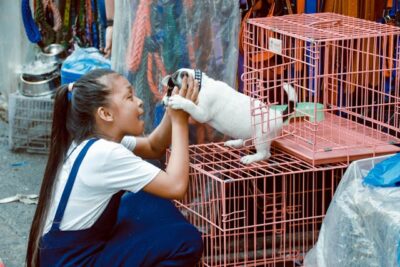
First Days at Home
The first few days set the tone for a dog's transition. Allow them to explore the home calmly while providing consistency in feeding and sleeping routines. Families who adopt a puppy in Florida should expect an adjustment period, particularly for pups coming from animal shelters or foster care.
Building a Strong Bond between Kids and Dogs
Integrating a new dog into the family involves building a strong bond between kids and dogs. Encourage children to spend quality time with the dog through gentle play and positive interactions, helping to establish trust and respect. Teaching children to be patient and understanding of the dog's needs fosters a loving and lasting relationship.
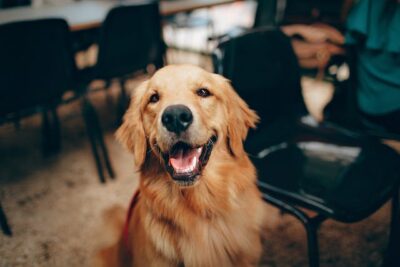
Signs of a Happy and Healthy Dog
Physical Indicators
Signs of a happy and healthy dog can include a shiny coat, bright eyes, and a lively demeanor. A healthy dog should have a good appetite, maintain a healthy weight, and have regular bowel movements. Regular veterinary check-ups and vaccinations also contribute to a dog's overall health and happiness.
Behavioral Cues
Signs of a happy and healthy dog can include a wagging tail, playful behavior, and a willingness to interact with their family. A healthy dog will also show curiosity in their surroundings and maintain a relaxed posture. Positive social interactions with other dogs and people are also indicators of a happy and well-adjusted dog.
Common Challenges and Solutions
Dealing with Separation Anxiety
Dealing with separation anxiety in dogs can be challenging, but there are several solutions to help alleviate their distress. Providing them with plenty of exercise and mental stimulation before leaving can help reduce anxiety.
Gradually accustoming them to being alone and using calming aids, such as music or pheromone diffusers, can also be beneficial.
Addressing Behavioral Issues in Kids and Dogs
Addressing behavioral issues in kids and dogs requires understanding and patience. Establishing clear rules and boundaries for both children and dogs can help prevent conflicts. Positive reinforcement and consistent training methods can also encourage good behavior and strengthen the bond between kids and dogs.
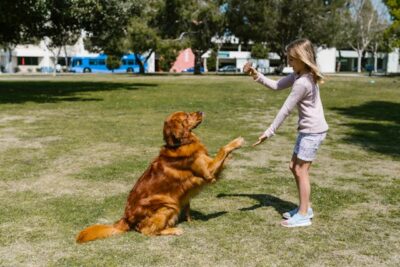
Outdoor Activities for Kids and Dogs
Fun and Safe Exercises
Outdoor activities for kids and dogs can include walks, hikes, and games of fetch. These activities provide exercise and mental stimulation for both kids and dogs, strengthening their bond. It's important to ensure activities are safe and suitable for the age and size of both the child and the dog.
Importance of Regular Exercise for Dogs
Regular exercise is essential for dogs to maintain their physical and mental health. Outdoor activities such as walks, runs, and playtime not only provide exercise but also stimulate their senses and prevent boredom. Engaging in regular exercise can help dogs stay healthy, happy, and well-behaved.

Grooming Tips for Kids and Dogs
Basic Grooming Practices
Basic grooming practices for kids and dogs include brushing the dog's coat regularly to prevent matting and remove loose fur. Teaching kids to gently handle grooming tools and interact with the dog calmly can help create a positive grooming experience.
Additionally, keeping the dog's ears clean and nails trimmed is important for their health and well-being.
Involving Kids in Dog Care
Involving kids in dog care can be a fun and educational experience for both the child and the dog. Teaching kids how to groom the dog, such as brushing their coat or cleaning their ears, can help them bond and develop a sense of responsibility. Supervising these activities ensures that both the child and the dog remain safe and comfortable.

Vet Visits and Vaccinations
Regular Checkups for Dogs
Regular vet checkups are important for dogs to maintain their health and detect any potential issues early. During these visits, dogs receive necessary vaccinations to protect them from common diseases. Following a vet-recommended vaccination schedule helps ensure that dogs stay healthy and happy.
Vaccination Schedule for Puppies and Kids
Both puppies and kids require a vaccination schedule to protect them from common diseases. Puppies need a series of vaccinations starting at around 6-8 weeks old, with boosters every few weeks until they are about 16 weeks old. Similarly, kids require vaccinations at specific ages to protect them from various illnesses, following a schedule recommended by healthcare providers.
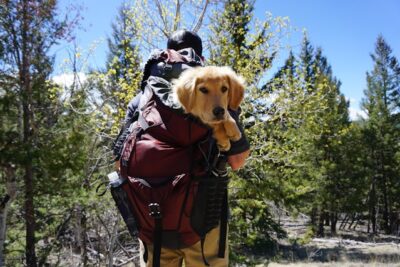
Traveling with Kids and Dogs
Tips for Stress-Free Travel
Traveling with kids and dogs can be made easier with some preparation. Ensure both have had recent bathroom breaks and pack plenty of snacks and water. Keep kids and dogs comfortable with favorite toys or blankets, and plan for regular stops to stretch and move around.
Choosing Dog-Friendly Destinations
Choosing dog-friendly destinations can make traveling with kids and dogs more enjoyable. Look for accommodations and attractions that welcome pets, such as pet-friendly hotels or parks. Researching local dog-friendly activities and amenities ensures that both kids and dogs can have a memorable and stress-free travel experience.
Conclusion: Best Dog Breed
In conclusion, the process of finding the best dogs for kids involves careful consideration, but the rewards are immeasurable. Beyond fostering responsibility in your children, a well-chosen canine companion has the potential to create a lifetime of memories and become a beloved member of your family.
The journey to discovering the perfect family dog involves understanding the dynamics of family life, considering the best dog breeds suitable for your home, and envisioning a life filled with shared moments, daily exercise, and quality time spent with your furry friend.
As your family grows and evolves, having a dog that seamlessly integrates into your lifestyle, adapts to the presence of other pets, and brings joy to every member, including older kids, contributes to the harmonious bond between your family and your chosen canine companion.
Imagine life with the ideal family dog, one that not only meets your expectations but exceeds them, enriching the lives of everyone involved. So, invest the time and effort in choosing wisely, and you'll undoubtedly experience the joy and fulfillment that the best dogs for kids can bring to your home. If you're looking for puppies for sale in Florida and surrounding areas, check out our listing and choose the perfect puppy for you and your family. Additionally, if you're in Georgia or surrounding areas, visit our listing to find your ideal furry companion.
FAQs: Best Dogs for Kids
- Q1: What characteristics make a dog suitable for families with kids?
- A1: The best family dogs exhibit traits such as patience, friendliness, and compatibility with children. A well-chosen breed's reputation for being good with kids is a valuable consideration.
- Q2: Are there specific dog breeds that are known to be the best for families?
- A2: Yes, certain dog breeds are renowned as the best for families. These breeds often have a reputation for being gentle, friendly, and patient with kids.
- Q3: How can I ensure a smooth introduction between a new pup and my children?
- A3: A patient and gradual introduction is key. Allow the pup and kids to get acquainted under supervision, ensuring a positive initial interaction.
- Q4: Is it important to consider how a dog interacts with other dogs?
- A4: Yes, especially if you have other dogs or plan to introduce more pets to your family. Assessing a dog's behavior with other dogs contributes to a harmonious household.
- Q5: Can an adult dog adapt well to family life?
- A5: Absolutely. Many adult dogs are well-suited for family life, and their personalities are often well-established, making it easier to match them with the right family.
- Q6: What are some activities that can be enjoyable for both kids and family dogs?
- A6: Engaging in activities like dock diving, where the family dog can showcase its skills, creates a fun and bonding experience for both kids and the canine member.
- Q7: How can I gauge a dog breed's reputation for being good with kids?
- A7: Researching a breed's reputation, reading testimonials, and consulting reputable sources help in understanding a dog breed's suitability for families with children.
- Q8: What should I consider when choosing a dog breed for a family with older kids?
- A8: For families with older kids, it's crucial to choose a dog breed that aligns with the activity level and preferences of the entire family.
- Q9: Are there specific dog breeds known for their patience?
- A9: Yes, patience is a desirable trait in family dogs. Certain breeds are known for their patient nature, making them excellent companions for households with kids.
- Q10: Can I train my family dog for activities like dock diving?
- A10: Yes, many dogs can be trained for activities like dock diving. It's essential to start with basic obedience training and gradually introduce them to the activity in a positive and encouraging manner.
- Q11: Are Brussels Griffons good with children?
- A11: Yes, Brussels Griffons are known to be good with children. They are affectionate, playful, and enjoy being part of family activities, making them great companions for kids.


